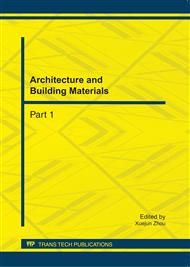p.1106
p.1113
p.1117
p.1121
p.1128
p.1137
p.1141
p.1146
p.1151
Analysis on Thermal Characteristics of Phase Change Roof and Insulation Roof
Abstract:
The two-dimensional unsteady heat transfer models of common roof, insulation roof and phase change roof were established, and the thermal characteristics of common roof, insulation roof and phase change roof with different phase transition temperature were analyzed based on CFD software, the hourly average temperature distribution of their top and bottom surface from initial stage to steady stage and 24-hour hourly average temperature distribution of and average heat flux of bottom surface in steady stage were also attained. The results show that, under air conditioning constant temperature mode, addition of insulation material and phase change material observably improve the heat insulation performance of roof structures, the cooling and energy saving effect of roof more obviously, the attenuation multiple and delay time of roof more obviously, and make the hourly distribution of average temperature and average heat flux of roof bottom surface much gentler. In addition, choosing a phase change material with suitable phase transition temperature according to outside air comprehensive temperature is the key to utilize its latent heat more effectively.
Info:
Periodical:
Pages:
1128-1136
Citation:
Online since:
September 2011
Authors:
Price:
Сopyright:
© 2011 Trans Tech Publications Ltd. All Rights Reserved
Share:
Citation:


